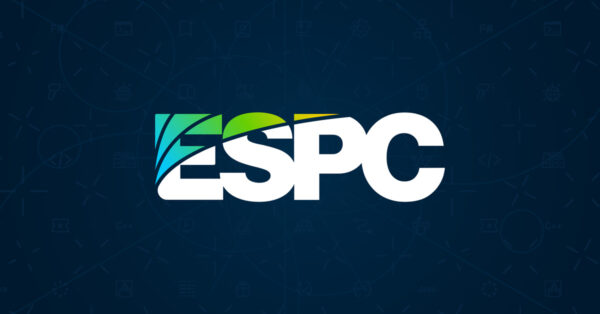In the recent years, SharePoint online has fast emerged as a leading Content Services platform. This presents an excellent Digital transformation with SharePoint opportunity for enterprises looking to move their on-premise ECM systems on to the Cloud. However, enterprises who are currently invested in Non-Microsoft ECM systems face some challenges in adopting SharePoint online.
For established organisations, a new platform is only useful if it has all the legacy data, in a familiar environment, ready to be accessed by a simple search. Unfortunately, achieving that simple goal of migration turns out to be more challenging than expected.
The fundamental challenges are: –
- Knowledge of Non-Microsoft or Legacy Microsoft systems – Most consultants or companies implementing SharePoint would have expert knowledge of SharePoint, but may not have expertise in the legacy platforms. The lack of understanding of “what is out there” creates a hurdle.
- Users set in their own way of working – Most users might have used the legacy platform long enough not to remember any other way of working. A change can be an unwanted shock to the system. The French for 90 is “Quatre-vingt-dix” (four times twenty plus ten) using base 20, while a French speaker from Switzerland would say “Nonante” (9 times 10) using base 10 You may hear a similar tune when migrating from Non-Microsoft platforms to SharePoint online.
- Correct estimation of migration effort and costs – The correct estimation of migration effort is sometimes a challenge in itself.
So why is it so hard to migrate and adopt a new platform in Digital transformation?
Traditional documents management and records management has its place in certain organisations, but the majority of business users have simple requirements for document management, collaboration and so on. What SharePoint has done is provide users with the most used features unified with a Microsoft Office experience. Part of the challenge arises because many businesses are moving out of very specialised legacy systems into a more generalised system like SharePoint. Having spent over a decade leading large scale Enterprise migrations, I tend to see these common scenarios pop up time and time again:
Virtual filing vs physical filing. – SharePoint seems to have built document management (DM) around the most common concept of a file share, where you need to create a hierarchy for storage, place the document in it (physical filing) and then manage the document. Most legacy DM systems ingest a document into the system, and then allow the users to file it (create a reference) in a hierarchy that make business sense (virtual filing). Content is subsequently retrieved through an ID based search, while SharePoint uses a hierarchical path based URL, where a document ID is an optional feature. Virtual filing allows a user to file the document in multiple folders without duplicating the content. To complicate matters further, folders can be virtually filed thus creating a web of hierarchy that could further be made dynamic by security trimming, which prevents certain users from seeing certain sections of the hierarchy.
Monolithic vs distributed content repositories –Traditional ECM systems like Documentum, Oracle WebCenter, OpenText eDocs, IBM FileNet etc have a single large repository. In SharePoint, you are suddenly confronted with the possibility of having thousands of Site Collections and Sites, with numerous libraries. Mapping the legacy content structure to SharePoint way of working could be a daunting task.
Incompatible Document Management features –SharePoint offers all the commonly used DM features like versioning, metadata, access control, locking and so on. However, some systems like Documentum might offer a very complex versioning feature. One thing that regularly comes up in migrations is users having saved files with different extension in the same version series, which SharePoint does not accept. For e.g. most DM systems allow you to save a docx as version 1 and a pdf as version 2. Such version series need special handling during migration, like converting them to SharePoint Document Sets.
Different Security Models – Every system has its own way of securing content, some offer basic permissions while others provide granular level security. Translating permissions into SharePoint permission levels poses a challenge.
How to overcome these challenges and convert them into an opportunity?
Migration presents an opportunity to realign your content platform with the future needs of your business. It allows you to gain an insight into your existing content landscape, weed out redundant content, enrich the metadata for faster accurate searches, restructure for simpler use.
- Planning and Preparation to produce something better than before – “Failing to Plan is planning to Fail”. Even the smallest of tasks need a proper plan, lots of pre-migration checks and the right rules and process in place to give the user something better than what they already had. For a user, the migration is only successful if it is easier, quicker and aesthetically more pleasing than the previous system.
- Training and Communication – Old habits die hard. Researchers say that if you do something daily for 66 days, it becomes a habit, and you master it. Most users have been doing the same things on their legacy platform for years. The right training plan is key to user adoption of the new SharePoint platform.
- 80 – 20 rule – Using any automated migration solution, 80% of the content can be migrated with little effort. Decide what to do with the worst 20%. Don’t double your budget to chase what doesn’t matter to the end users.
- Don’t recreate the old system on the new platform. – Embrace the new way of working and use it as an opportunity to improve productivity.
- Choose the right solution – For a successful transition, the following are extremely important:
o Product – the right product capable of the job (you cannot ride a camel to the Cheltenham cup horse race)
o Process – well defined and established process like industry standard ETL
o People – with expertise of source, target, the migration process, and the experience of past migrations to mitigate the risks identified previously (Jason of Argonauts would have found his journey much easier if he would have done it the second time) - Understand the true cost of a move – Cost of physically copying the content from one platform to another is not the biggest cost of migration. The real cost should include time spent by management, technical team, communications & training team, development team for customisation, subject matter experts of both the source and target systems and everyone who is directly or indirectly impacted by the transition.
Author: Rakesh Chenchery is Technical Director at Proventeq Ltd, and has led various Enterprise grade content migrations for over a decade, helping organisations worldwide move from a wide range of legacy systems to SharePoint.
Reference:
Chenchery R (2017). Digital Transformation With SharePoint – An Opportunity, Not A Challenge [online] Available at: http://www.proventeq.com/blog/digital-transformation-sharepoint-an-opportunity-not-challenge [Accessed 02 Nov. 2017].










